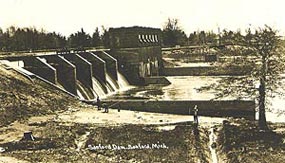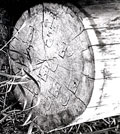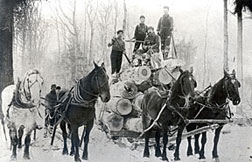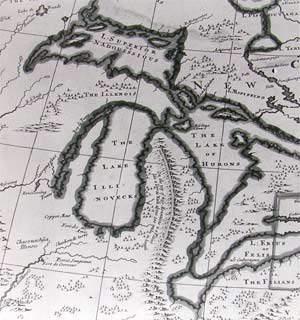
 Sanford was named in honor of Charles Sanford in 1870. He was born April 27, 1816 in Madison County, New York to Peleg P.
Sanford and Annie (Skiff) Sanford. He married Eliza Button in 1842 and that same year moved to Geneva, Ohio, where he practiced the trade of shoemaking.
In 1863 he came to Jerome Township. In 1864 he bought of Benjamin Dean 100 acres of pine land in Midland County, and 213 acres where Sanford is located.
The tract was known as the "Salt-Spring Reserve".
Sanford was named in honor of Charles Sanford in 1870. He was born April 27, 1816 in Madison County, New York to Peleg P.
Sanford and Annie (Skiff) Sanford. He married Eliza Button in 1842 and that same year moved to Geneva, Ohio, where he practiced the trade of shoemaking.
In 1863 he came to Jerome Township. In 1864 he bought of Benjamin Dean 100 acres of pine land in Midland County, and 213 acres where Sanford is located.
The tract was known as the "Salt-Spring Reserve".
 He was a most important member of the community he founded for in addition to operating an 80-acre hay farm and a hotel, he served as Justice of the
Peace for a period of 19 years, as Township Clerk for three terms, and as inspector at the first election. You can read more about Charles Sanford
here.
He was a most important member of the community he founded for in addition to operating an 80-acre hay farm and a hotel, he served as Justice of the
Peace for a period of 19 years, as Township Clerk for three terms, and as inspector at the first election. You can read more about Charles Sanford
here.
It was during the period of 1860 to 1870 that four area towns were formed; Averill (Red Keg), Edenville (Camp 16), Hope, and Sanford. Sanford was officially platted in 1870. See Stan Berriman’s book, Upper Tittabawassee River Boom Towns for more information on these towns.
The fact that the Flint and Pere Marquette Railroad was completed as far as Sanford by the spring of 1871 gave the village a considerable advantage, for now it had both river and rail traffic. The hotel business boomed.
 The greatest trade, of course, was done in lumber. During the quarter century preceding 1884, the grand total of logs floated down the Tittabawassee
River annually amounted to 48,700,000 feet, according to the Portrait and Biographical Album of Midland County and 13,700,000 more feet were being shipped
on the Flint and Pere Marquette Railroad at the same time.
The greatest trade, of course, was done in lumber. During the quarter century preceding 1884, the grand total of logs floated down the Tittabawassee
River annually amounted to 48,700,000 feet, according to the Portrait and Biographical Album of Midland County and 13,700,000 more feet were being shipped
on the Flint and Pere Marquette Railroad at the same time.
While the area boomed and bustled, life went on quite simply for most early residents. Homes were rough log cabins built for the most part by the hands of the owners. Land had to be cleared for barter crops and horses were few and hard to come by. A few oxen teams were employed, and single horse owners teamed up with others to get the job done.
 Work clearing the land was hard and rough, but fun was to be had in dances and berry-picking parties. The old-time residents recalled walking for
several miles along rough log or sand roads to get to their "fiddlin' parties". The Sanford cemetery was the site of a ball diamond where many gathered
to enjoy the sport.
Work clearing the land was hard and rough, but fun was to be had in dances and berry-picking parties. The old-time residents recalled walking for
several miles along rough log or sand roads to get to their "fiddlin' parties". The Sanford cemetery was the site of a ball diamond where many gathered
to enjoy the sport.
Bear and deer roamed the woods and hunting was more often a necessity than a sport. There was a bounty on the wolf and wolf pens were built to catch this predator.
To the eye of Indian, lumberman and homesteader alike, the land was good. The Sanford area has moved from lumbering era to resort haven, but its natural resources remain its most valued possession.
The waters now are harnessed and used for other powers
Good roads and automobile resorts, and cable towers,
No more we hear the whistle blow or hear the falling pine
The roaring of Old Garish dam as in the lumbering time.
Those lumbering days are over, but we like to talk it o'er,
With those who hazarded their lives and toiled along the shore;
That feeling of true brotherhood within us still remains,
Tho' many of those jolly lads, we'll never see again.
Excerpt from a poem by: A. H. Levely,
Pioneer of the Edenville Area